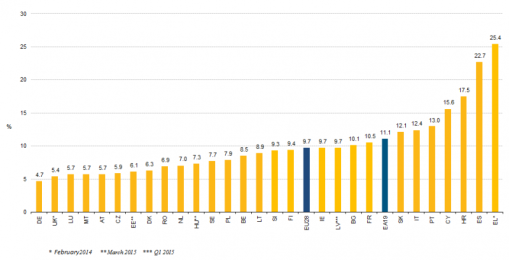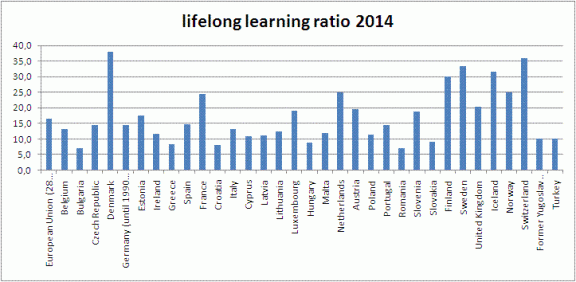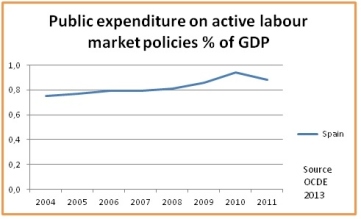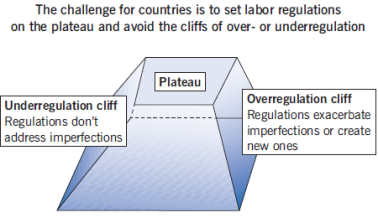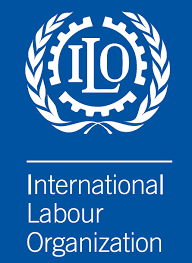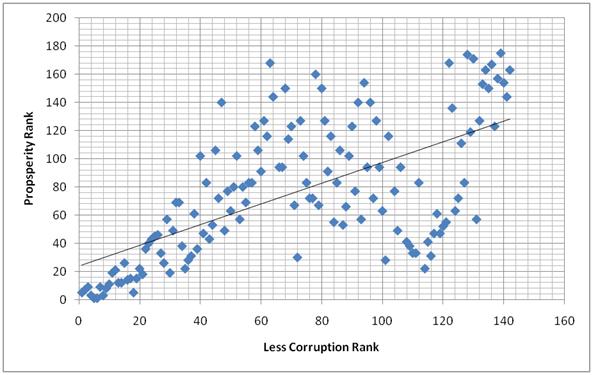 Few months ago, I posted a summary of the empirical evidence on Active Labour Market Policies (ALMP) in Spain. I want more. Always more and I would like to focus on the importance of asssesing ALMP if you want to help policy makers when they are designing Employment Programes.
Few months ago, I posted a summary of the empirical evidence on Active Labour Market Policies (ALMP) in Spain. I want more. Always more and I would like to focus on the importance of asssesing ALMP if you want to help policy makers when they are designing Employment Programes.
Definition: What are ALMP?
ALMP are a set of interventions aimed to improve the access of the unemployed to the labour market, job-related skills and the functioning of the labour market (Martin, 1998). Indeed, ALMP are designed to moderate cyclical downturns, reduce structural imbalances and support at-risk employers (Arellano, 2010). An expansive definition may include specific policies for workers who want to improve their labour condition while they are working and acquiring new competences trough the lifelong learning approach (CEDEFOP, 2013).
AS we already mentioned, ALMP are a key public policy in advanced economies because job search assistance, training, wage subsidies, and direct job creation are the main tool of the European countries’ efforts to combat unemployment (Kluve, 2010). These programes are implemented to enhance labour supply -training-, increase labour demand –subsidies- and improve the functioning of the labour market -public employment services- (Betcherman, Olivas & Dart, 2004). The convenience of assess the effectiveness of the ALMP becomes more relevant in a context of scarce resource and budget constraints. It is imperative to get a better value for public expenditure in ALMP (Martin & Grubb, 2001).
Expected value of ALMP
The impact of ALMPs on labour market outcomes has been assessed through both micro and macro studies (Martin, 2015). Despite the specificities of labour markets and the problem of the unobserved heterogeneity when you are comparing cross country studies in ALMP (Martin & Grubb, 2001), there is a wide corpus of scientific literature showing some common results in high-income countries that help to understand better the importance and usefulness of ALMP. However, ALMP are not the magical solution in a context of high unemployment and depressed labour demand. They may alleviate the symptoms (Lechner & Wunsch, 2009) but not overcome the structural imbalances. A comprehensive strategy –economic, monetary, industrial and educative- is required.
Evaluation, Assesment and ethics
The evaluation methodologies to know the impact of ALMP are experimental and quasi-experimental. The benchmark to estimate causal impact of any treatment is an ideally randomized experiment (Scott & Watson, 2011). However, ethical and political concerns are linked to the randomization because no government wants to become unpopular by excluding eligible unemployed individuals from an ALMP (World Bank, 2009). Consequently, research is mainly based on administrative data and pilot studies using quasi-experimental methodology. Techniques suitable for quasi-experimental data are Matching, Regression, Regression Discontinuity, Instrumental Variables and Difference in Differences (Verick, 2013).
As a conclusion, the measure of ALMP effectiveness depends on the specific country involved, length of the policy, participant profiles, programme type and methodology applied (Borra, Palma, Gonzalez & Aguado, 2012).
More on the empirical evidence of ALMP and the relationship with Spain and the Balearic Islands
The last twenty years some iconic meta-analysis focused the attention on efficiency and effectiveness of ALMP; Martin (1998), Dar and Tzannatos (1999) Martin and Grubb (2001), Betcherman, Olivas and Dar (2004), Kluve (2010), Card, Kluve & Weber, (2010). Last but not least, a macroeconomic review of the efficiency of ALMP has been presented recently by Martin (2015) adding a fresh insight beyond the microdata analysis. We present a short review of empirical cross-country findings with the Spanish and Balearic Islands performance in ALMP.
Job searching assistance and counselling / meeting case, achieve positive impacts in the short run. This is the cheapest ALMP (Rosholm, 2014) but requires solid Employment Services. The effect can be limited when cyclical unemployment is high due an economic downturn or when the informal economy avoids flourishing job offers. Notwithstanding, Spain has the OECD second worst average load rate of unemployed registered -269- for each worker of the Public Employment Services (OECD, 2014). On the other hand, Spain is one of the top informal economies in the Eurozone with an estimation of 18% of national GDP involved in such unfair practices.
Last but not least, the spatial distribution of the placement services appears as a key element of leaving unemployment (Détang & Gaigné, 2009). Spain exhibits a strong spatial correlation between local unemployment rates and neighbourhood and the empirical evidence found important disparities in accessibility to employment offices that are affecting to the adequate delivering of ALMP (Suarez, Mayor & Cueto, 2012a). Indeed, economic theory indicates that the market share of PES is higher in those Spanish regions in which the labour market is less dynamic (Suarez, Mayor & Cueto, 2012b). It is not only a matter of professionals working in the PES, but also the number of employment offices and it spatial distribution.
Training programmes achieve more positive impacts in the medium and long run than in the short run (Arellano, 2010). Similar results were found in the Balearic Islands using propensity score matching (Alegre, 2009). The unemployed being trained in the low tourist season have 8,7% more probabilities of being hired the next season than unemployed with same characteristics of gender, age, studies, nationality and professional experience but not involved in training activities. However, Training programmes have some risks such as the lock-in effect and the failure in the design of the programme due an inappropriate contents or the absence of quality management systems (CEDEFOP, 2015). Another issue is the unobserved heterogeneity such as the motivational characteristics of the unemployed. It is difficult to disentangle from the overall effect of being treated by an ALMP (Borra, Palma, Gonzalez & Aguado, 2012). As training activities are usually longer than other ALMP, motivation, personality traits and psychological profiles may become relevant to the success of the programme.
Subsidized employment has not a significant impact in the employment outcomes of the participants in the long run. Furthermore, deadweight loss and substitution effects are presented in the literature review (Verick, 2013). However, this is the ALMP which still captures the higher ratio of the Spanish ALMP expenditure. Figures are clear; 0.3% of the national GDP (Cueto & Suarez, 2014) and 25% of the regional budgets for ALMP is dedicated to subsidising employment (Eurostat, 2011).
Public Employment Programmes have not significant impact in improving the employability of the participants after their participation (Kluve, 2010). Indeed, from the point of view of many employers there is a stigma attached to public works jobs (Betcherman, Olivas & Dar, 2004). It is a social protection policy more than an employment or human capital policy. However, a massive Public Employment Programme –Plan E- was launched in Spain during the economical crisis. It created a half million of temporary jobs using a national fund scheme for local investment but the consequences in the long run for the participants are not assessed yet and the unemployment ratio kept rocketing during and after the Plan E. The Spanish public employment programmes should be transformed into training actions based on dual formation schemes that re-skills workers, promotes lifelong learning and labour market adaptability (Caparros, 2012).
Entrepreneurship Incentives have a positive effect in some targeted unemployed such as older unemployed workers and well educated (Betcherman, Olivas & Dar, 2004) but should be balanced with the business rate of survival. The Spanish research is not conclusive due the lack of control group (Garcia Serrano & Toharia, 2008). The degree of innovation and the entrepreneur’s qualifications are key elements in the growth and business success. In 2008, the annual rate of business failure was 30% similar to other Europeans countries (Cueto & Suarez, 2014). More impact evaluation in this field must be done due the development stage of this ALMP in Spain (Mayor, Cueto & Suarez, 2014).
e-services are a new trend to provide ALMP in some advanced economies such as Finland or the Netherlands (Martin, 2015). However, the empirical evidence is mixed about the usefulness of online tools as a labour market matcher but recent research suggest that online job searching might speed up the reemployment of unemployed workers (Kuhn, 2015). There is a trade-off between cost cutting PES expenditure and activation strategies that demands face-to-face techniques and meeting case (Rosholm, 2014). The Spanish Employment Service –SEPE- is developing a unique online job board where can be matched national labour demand and labour supply. All regional PES are active part of the online job board. On the other hand, SOIB is a fully member of the online EURES network which provides guidance, job searching and training possibilities across Europe. However, there is a national and regional lack of research to know the impact of such e-services.
To sum up, the Spanish ALMPs is suffering a lack of impact evaluation studies. In fact, Card, Kluve & Weber (2010) meta-analysis review only considered three Spaniard studies from an overall of two hundred. On the other hand, the Spanish Employment Strategy and the PES do not take into account some promising results produced by national researchers as we already commented. It is time to invest in a new generation of tailored ALMP that responds the needs of regional labour markets, makes worthy the public expenditure and above all, designed in line with the empirical evidence.
References
ALEGRE, J. (2010) Valoració de l’efecte sobre la inserció laboral dels cursos de formació professional dirigits a persones en atur. Estudis Laborals OTIB. No 9, Available from http://www.revecap.com/revista/numeros/53/pdf/alfonso.pdf
ARELLANO, F. (2010) Do training Programmes get the unemployed back to work? A look to Spanish Experience. Revista de economia aplicada. No 52. Available from http://www.revecap.com/revista/numeros/53/pdf/alfonso.pdf
DAR, A. & TZANNATOS, Z. (1999): Active labour market programs: a review of the evidence from evaluations, World Social Protection Discussion Paper, No. 9901.
BETCHERMAN, G., OLIVAS, K. & DAR, A. (2004) Impact of active labour market programs: new evidence from evaluations with particular attention to developing and transition countries, World Bank Social Protection Discussion Paper, No. 0402.
BORRA, PALMA, AGUADO & GONZALEZ (2012) Evaluation of an Active Labour Market Programme in a Context of High Unemployment, Desarrollo y sociedad, No 70.
CARD, D., KLUVE, J., & WEBER, A., (2010): “Active labor market policy evaluations: A meta analysis.” Economic Journal, Nº, 129 452–477. Available from http://onlinelibrary.wiley.com/doi/10.1111/j.1468-0297.2010.02387.x/pdf
CAPARROS, F (2012) Les Escoles taller, Cases d’Ofici i els Tallers d’Ocupació: un quart de segle de formació amb alternança amb l’ocupació (1985-2011): valoració i propostes de futur. Journal of Public Policies and Territories P3T Paper 2, 1-33. Available from http://www.politicsandterritories.com
CUETO, B., SUAREZ P. (2014) A review of active and passive labour market policies in Spain. Munich Personal RePEc Archive [Online] MPRA Paper 60648. Available from http://mpra.ub.uni-muenchen.de/60648/
DÉTANG-DESSENDRE, C., GAIGNÉ, C., (2009) Unemployment duration, city size, and the tightness of the labor market. Regional Science and Urban Economics, No 39, 266-276.
EUROPEAN UNION. CEDEFOP (2013) Benefits of vocational education and training in Europe for people, organisations and countries. Luxemburg: Publications Office of the European Union
MAYOR, M., CUETO, B. and SUAREZ, P. (2014): Fostering the Self-employment in Spain: An Evaluation of the Capitalization of Unemployment Benefits Programme. Geographical Labor Market Imbalances. AIEL Series in Labour Economics. Physica Verlag-Springer, (forthcoming).
KLUVE, J. (2010) The effectiveness of European active labor market programs. Labour Economics, Nº 17, 904–918. Available from http://dx.doi.org/10.1016/j.labeco.2010.02.004
LECHNER, M. & WUNSCH, C. (2009) Are training programs more effective when unemployment is high?, Journal of Labor Economics, No 27, 653-692. Available from
MARTIN, J. (1998), What Works Among Active Labour Market Policies: Evidence from OECD Countries’ Experiences, OECD Labour Market and Social Policy Occasional Papers, No. 35, OECD Publishing. Available from http://dx.doi.org/10.1787/267308158388
MARTIN, J. & GRUBB D. (2001) What Works and for whom: a review of OCDE countries´ experiences with Active Labour Market Policies, Swedish Economic Policy Review, 8, No. 2, Available from http://dx.doi.org/10.2139/ssrn.348621
MARTIN, J. (2015), Activation and active labour market policies in OECD countries: stylised facts and evidence on their effectiveness, Iza Journal of Labor Policy, Nº 44.
OECD.(2014) Economic survey of Spain. Paris: Publications Office of the Organization for Economic Cooperation and Development.
ROSHOLM, M. (2014) Do case workers help the unemployed? Evidence for making a cheap and effective twist to labor market policies for unemployed workers. Iza World of Labor, Nº 72, Available from http://wol.iza.org/articles/do-case-workers-help-the-unemployed
STOCK, J.H., WATSON, M.W. (2011) Introduction to econometrics. Addinson-Wesley: Prentice Hall
SUAREZ, P., MAYOR, M. & CUETO, B. (2012a) The accessibility to employment offices in the Spanish labor market. Papers in Regional Science, No 91, 823-848.
VERICK, S. (2013) Labour Market Policies for development. In CAZES, S. & VERICK, S. (eds.). Perspectives on Labour Economics for Development. Geneva: Publications Office of the International Labour Organization
WORLD BANK (2009) A practitioner’s guide to evaluating the impacts of labour market programmes. Employment policy primer. No 12 Washington




